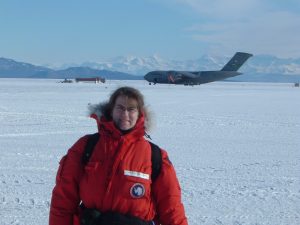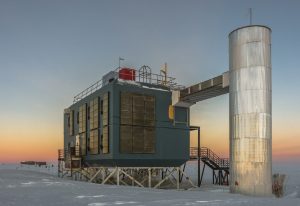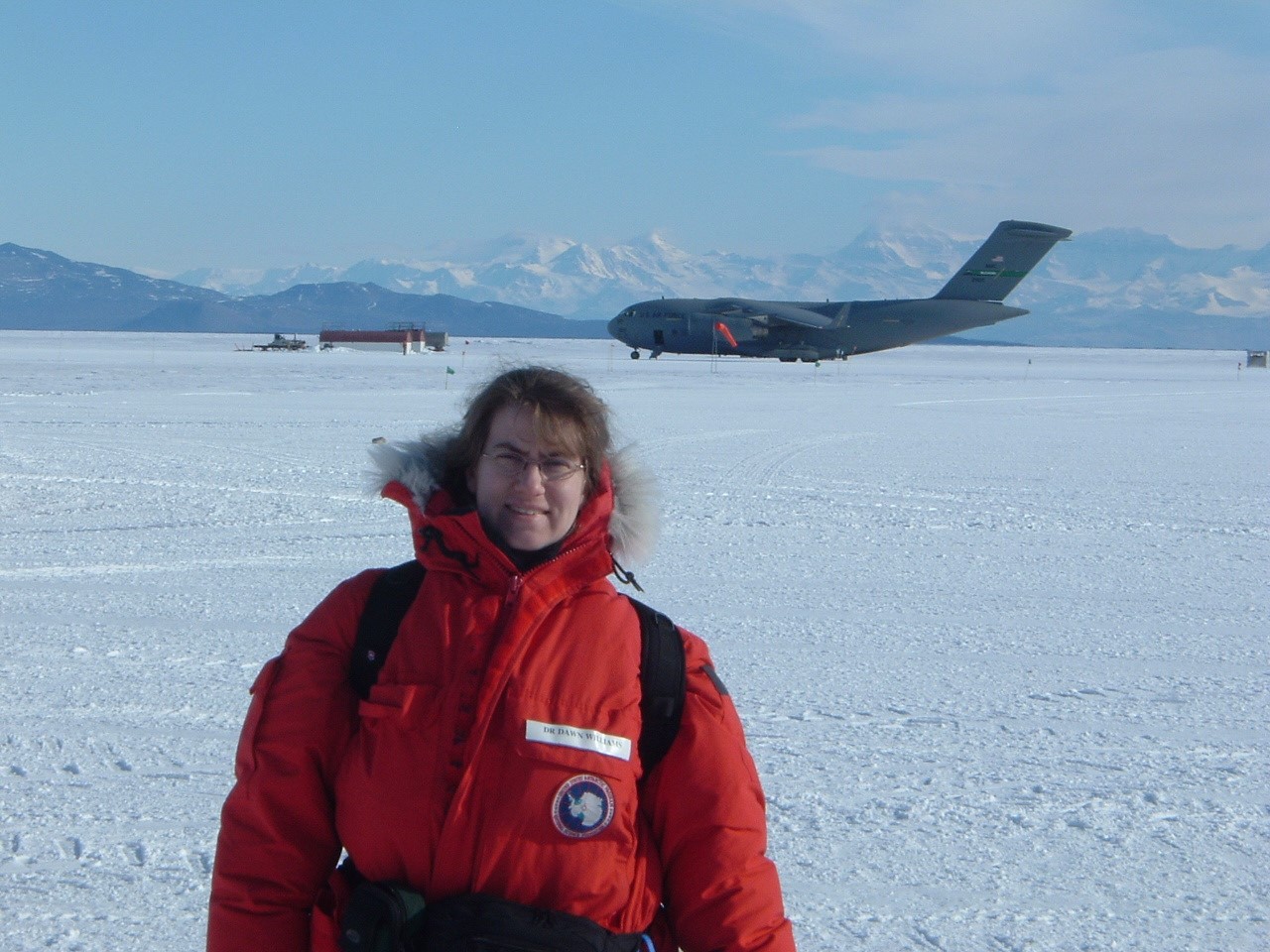
TUSCALOOSA, Ala. — An international group of researchers, including several from The University of Alabama, measured the interaction between tiny particles that travel the cosmos, called neutrinos, and Earth.
The findings, which carry implications for our understanding of physics and Earth’s core, were published today in the journal Nature.
Neutrinos are abundant subatomic particles famous for passing through anything and everything, rarely interacting with matter. About 100 trillion neutrinos pass through your body every second.
Now, scientists have demonstrated the Earth stops highly energetic neutrinos—they do not go through everything. These high-energy neutrino interactions were seen by the IceCube detector, an array of 5,160 basketball-sized optical sensors deeply encased within a cubic kilometer of clear Antarctic ice near the South Pole.
“IceCube was built to detect neutrinos from outside the solar system, even outside our galaxy, but the instrument is capable of much more than that,” said Dr. Dawn Williams, UA associate professor of physics and astronomy and now analysis coordinator for the research team that authored the paper. “This study demonstrates IceCube’s ability to probe fundamental neutrino physics with neutrinos produced right here in our atmosphere, at energies higher than those achieved in accelerator-based studies.”
During the work that produced the results of the paper in Nature, Williams was calibration coordinator, meaning she coordinated activities related to translating raw IceCube data into physics quantities such as the energy and direction of neutrinos.
Other co-authors on the paper at UA include Dr. Patrick Toale, assistant professor of physics and astronomy; Sandro Kopper, a postdoctoral researcher; Prabandha Nakarmi, a doctoral student; and James Pepper, who graduated in May 2017 with a doctorate in physics.
IceCube’s sensors do not directly observe neutrinos, but, instead, measure flashes of blue light, known as Cherenkov radiation, emitted by muons and other fast-moving charged particles, which are created when neutrinos interact with the ice, and by the charged particles produced when the muons interact as they move through the ice.
By measuring the light patterns from these interactions in or near the detector array, IceCube can estimate the neutrinos’ directions and energies.
The study is based on one year of data from about 10,800 neutrino-related interactions, stemming from a natural supply of very energetic neutrinos from space that go through a thick and dense absorber: the Earth. The energy of the neutrinos was critical to the study, as higher energy neutrinos are more likely to interact with matter and be absorbed by the Earth.
Scientists found that there were fewer energetic neutrinos making it all the way through the Earth to the IceCube detector than from less obstructed paths, such as those coming in at near-horizontal trajectories.
The probability of neutrinos being absorbed by the Earth was consistent with expectations from the Standard Model of particle physics, which scientists use to explain the fundamental forces and particles in the universe. This probability—that neutrinos of a given energy will interact with matter—is what physicists refer to as a “cross section.”
“Understanding how neutrinos interact is key to the operation of IceCube,” explained Francis Halzen, principal investigator for the IceCube Neutrino Observatory and a University of Wisconsin–Madison professor of physics.
Precision measurements at the HERA accelerator in Hamburg, Germany, allow researchers to compute the neutrino cross section with great accuracy within the Standard Model—which would apply to IceCube neutrinos of much higher energies if the Standard Model is valid at these energies.
“We were of course hoping for some new physics to appear, but we unfortunately find that the Standard Model, as usual, withstands the test,” added Halzen.

This study provides the first cross-section measurements for a neutrino energy range that is up to 1,000 times higher than previous measurements at particle accelerators. Most of the neutrinos selected for this study were more than a million times more energetic than the neutrinos produced by more familiar sources, like the sun or nuclear power plants.
Researchers took care to ensure that the measurements were not distorted by detector problems or other uncertainties.
“Neutrinos have quite a well-earned reputation of surprising us with their behavior,” said Darren Grant, spokesperson for the IceCube Collaboration and a professor of physics at the University of Alberta in Canada. “It is incredibly exciting to see this first measurement and the potential it holds for future precision tests.”
In addition to providing the first measurement of the Earth’s absorption of neutrinos, the analysis shows that IceCube’s scientific reach is extending beyond its core focus on particle physics discoveries and the emerging field of neutrino astronomy into the fields of planetary science and nuclear physics.
This analysis will also interest geophysicists who would like to use neutrinos to image the Earth’s interior, although this will require more data than was used in the current study.
“IceCube was built to both explore the frontiers of physics and, in doing so, possibly challenge existing perceptions of the nature of the universe. This new finding and others yet to come are in that spirt of scientific discovery,” said James Whitmore, program director in the National Science Foundation’s physics division.
For this study, the IceCube Collaboration, which includes more than 300 members from 48 institutions in 12 countries, expanded its research partnership to include geologists in an even larger multidisciplinary team. Physicists worked with geologists who have created models of the Earth’s interior from seismic studies to measure how neutrinos are absorbed by the Earth.
Contact
Adam Jones, UA communications, 205-348-4328 or adam.jones@ua.edu
